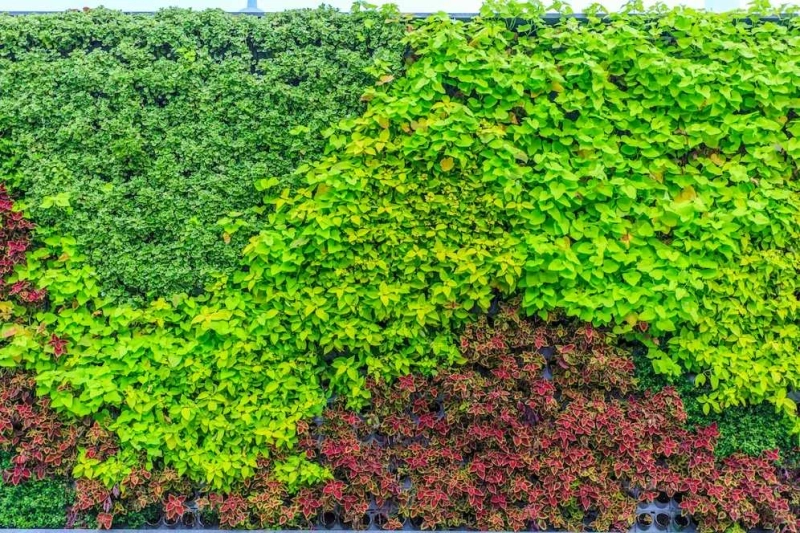Vertical wall gardens, also known as living walls or green walls, have gained immense popularity in recent years for their ability to transform ordinary spaces into lush, vibrant havens of greenery. Whether you have limited outdoor space or simply want to add a touch of nature to your home, creating a vertical wall garden can be a fulfilling and aesthetically pleasing project. In this comprehensive guide, we'll explore the art of crafting your very own vertical garden, from selecting the right location to choosing the perfect plants and maintaining your living masterpiece. Let's embark on this green journey and bring nature to your walls!
Choosing the Ideal Location
Before you start building your vertical wall garden, it's essential to select the perfect location. Consider factors like sunlight exposure, accessibility, and the aesthetics of the space. Most vertical gardens thrive in areas with bright, indirect sunlight, so choose a spot with optimal light conditions. Additionally, ensure that your chosen location has a sturdy wall or structure to support the weight of your garden once it's fully grown. Once you've found the ideal spot, it's time to gather your materials and get started.
Materials You'll Need
To create a stunning vertical wall garden, you'll need the following materials:
Vertical Garden Frame
The vertical garden frame is a structural necessity and a canvas for your botanical masterpiece. It provides the backbone that supports your living wall and determines its overall stability and durability. Consider factors like material, size, and design when choosing a frame. Common frame materials include wood, metal, and plastic, each with its own advantages and aesthetics. Ensure that the frame is securely anchored to the wall, as it will bear the weight of the entire garden once it's lush and flourishing.
Geotextile Fabric
This acts as a barrier between the soil and the frame, preventing soil erosion and providing a stable growing environment.
Plants
Choose a variety of plants that thrive in vertical gardens. Consider succulents, herbs, ferns, or even small flowering plants.
Potting Mix
Use a high-quality potting mix enriched with nutrients to ensure your plants have the best possible growing conditions.
Irrigation System
An efficient irrigation system is the lifeline of your vertical wall garden, ensuring that your plants receive the right amount of moisture to thrive. Choosing the appropriate irrigation system is crucial for maintaining the health and vitality of your green masterpiece.
Drip irrigation is a popular choice for vertical gardens, as it delivers water directly to the root zone, minimizing wastage and evaporation. This method provides a consistent moisture level, which is particularly beneficial for plants in a vertical setup. For more on drip irrigation, head over here.
Hooks and Mounting Hardware
These are necessary to securely attach your vertical garden to the wall.
Building Your Vertical Garden
Now, let's dive into the step-by-step process of building your vertical wall garden:
Prepare the Frame
Assemble the vertical garden frame according to the manufacturer's instructions. Ensure it's securely fastened to the wall, allowing enough space for your plants to grow.
Add Geotextile Fabric
Line the frame with geotextile fabric, leaving some excess at the top. This fabric will help retain moisture and prevent soil from spilling out.
Select Your Plants
Choose plants that are suitable for your chosen location's light conditions. Arrange them in their intended positions within the frame, keeping in mind the size and growth habits of each plant.
Planting
Fill the frame with the potting mix, pressing it gently against the geotextile fabric. Then, carefully plant each selected plant, making sure the root balls are secure.
Watering System
Set up your chosen watering system. Drip irrigation is an efficient option for maintaining consistent moisture levels. Ensure that water reaches all areas of the vertical garden.
Maintenance
Regularly check for signs of overwatering or underwatering. Trim and prune your plants as needed to maintain the desired shape and size of your living wall. Fertilize your garden as per the specific requirements of your chosen plants.
Enjoy Your Vertical Wall Garden
Over time, your vertical wall garden will flourish and provide a stunning, ever-changing backdrop of greenery to your space. Take the time to appreciate the beauty of nature thriving on your wall, and maybe even blog about your success story!
Tips for Success:
Consider the aesthetic arrangement of plants by mixing colors, textures, and growth patterns for a visually appealing vertical garden.If you're new to gardening, start with low-maintenance plants like succulents and herbs.Regularly monitor the health of your plants, looking out for signs of pests or diseases, and address them promptly.Experiment with different plant combinations to find what works best for your space and climate.Conclusion
In conclusion, creating a vertical wall garden is a rewarding and creative way to bring nature into your living space. With careful planning, the right materials, and a little maintenance, you can cultivate a vibrant and flourishing oasis that will be the envy of all who see it. So, roll up your sleeves, gather your materials, and embark on the journey of creating your very own vertical wall garden today!


